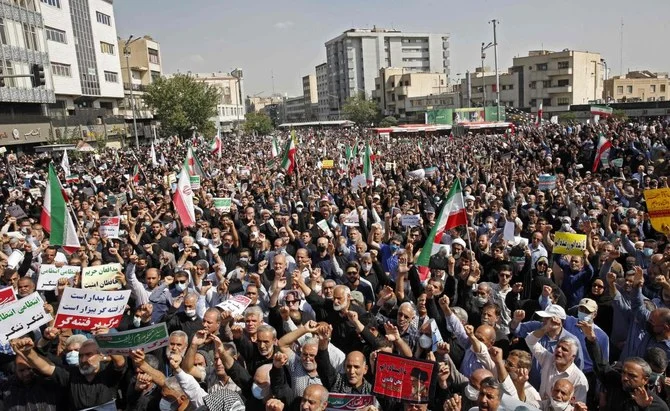What’s going on in Iran?
*TRIGGER WARNING* (discussion of violence and death)
Imagine living in a country where you could not step outside without your hair covered because of a law made by your government. You would most likely feel angry, angry enough to protest the unfair and restrictive law.
This is how the people of Iran currently feel, however, they cannot protest without fear of being hung and publicly executed. For most of the early 20th century, Iran was ruled by a monarchy that was invested in westernizing the nation and bringing about social, political, and economic reforms that could modernize the country. However, in the late 1970’s the Iranian Revolution took place, marking the end of the monarchy, which the United States had helped to protect. The Islamic Republic took over. Initially, after the Revolution, people gained more freedoms than they previously had. But the nation quickly became unstable and violent as the new regime gained control. To this day, Iranians live under the Islamic Constitution established in 1979, that restricts the people of Iran. The women of Iran are required to dress modestly as according to Muslim teachings, this includes covering the head with a scarf. Many Iranian citizens are Muslim and are happy to be able to wear a hijab as it is an important part of practicing their religion. However, for other Iranian citizens that do not choose to wear a hijab or head covering for religious reasons, the laws are oppressive and do not give women the choice to dress as they choose.
On September 16, 2022, Mahsa Amini died in police custody, similar to the deaths that have happened in the United States during recent years. She was arrested for not properly wearing a head covering. She was visiting Tehran, the capital city, and was arrested by morality police who were unhappy with the way that her hair was veiled. On the way to the police station she was tortured and got a concussion, which directly contributed to the 22-year-old’s death. Protests have broken out across the country in response, leading to even more deaths. Mahsa Amini’s death and the aftermath are comparable to the death of George Floyd in the United States, as his death at the hands led to uproar. The Iranian director for the International Crisis Group, Ali Vaez, states, “The reason the younger generation is taking this kind of risk [protesting] is because they feel they have nothing to lose, they have no hope for the future.”
The country and world are livid over the death of Mahsa Amini. She is not the only woman who has suffered because of Iranian modesty laws, but her public death has caused an uproar. In the 10 days since her death, 450 people have been arrested in Mazandaran, a northern province of Iran and 41 people have reportedly died, as of September 26. In an attempt to prevent the people of Iran from speaking about the protests and contacting the outside world, the government has shut down the internet, WhatsApp, and Instagram. Despite this, videos of protests have been shared globally. One Instagram account, (1500tasvir) shares videos from the protests in which people chant, harass the police, and burn head coverings that they feel are a manifestation of their lack of freedom. One contributor to 1500tasvir says that it is important that people see that others are also fighting around the country. ““When you … see other people feel the same way, you get more brave. You are more enthusiastic to do something about it … When the internet is cut off … you feel alone.”
As the Iranian people grasp at minimal internet access and protest for their freedom in the streets, the rest of the world must share the story of Mahsa Amini, her tragic death, and the circumstances that caused it to happen.
Bibliography:
“40 Years Later: Iran after the Islamic Revolution.” American University, www.american.edu/sis/news/20190408-40-years-later-iran-after-the-islamic-revolution.cfm.
Burgess, Matt. “Iran’s Internet Shutdown Hides a Deadly Crackdown.” Wired, Conde Nast, 23 Sept. 2022, www.wired.com/story/iran-protests-2022-internet-shutdown-whatsapp/.
“Iran Protests: at Least 450 Arrested in Northern Province.” The Guardian, Guardian News and Media, 26 Sept. 2022, www.theguardian.com/global-development/2022/sep/26/iran-protests-mahsa-amini-at-least-450-arrested-in-northern-province.
Leonhardt, David. “Iran’s Ferocious Dissent.” The New York Times, The New York Times, 26 Sept. 2022, www.nytimes.com/2022/09/26/briefing/iran-protests-mahsa-amini.html.

Abbie Ehrenberg is a senior who loves literature and learning about cultures and the world. She participates in Student Senate, Class Office, National...

